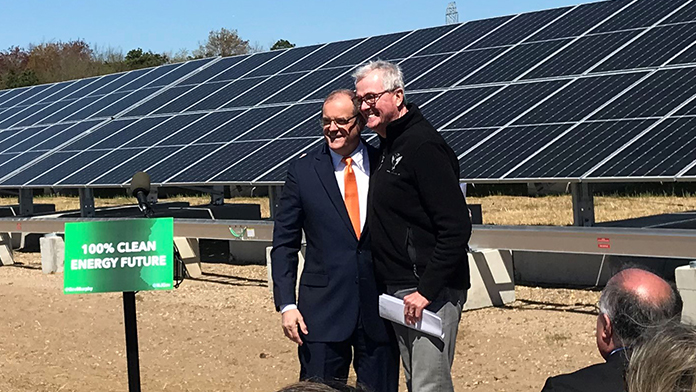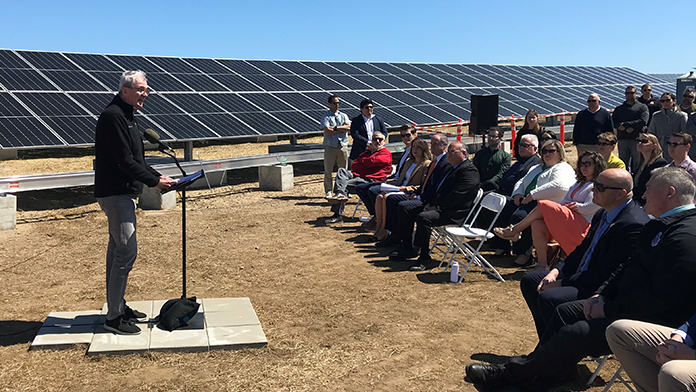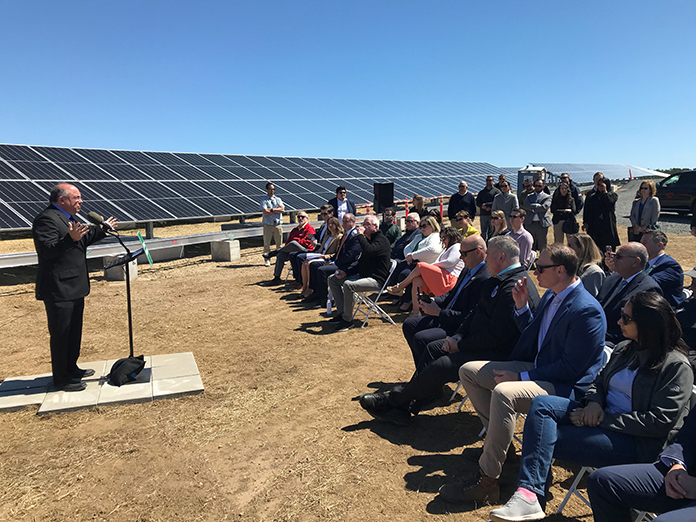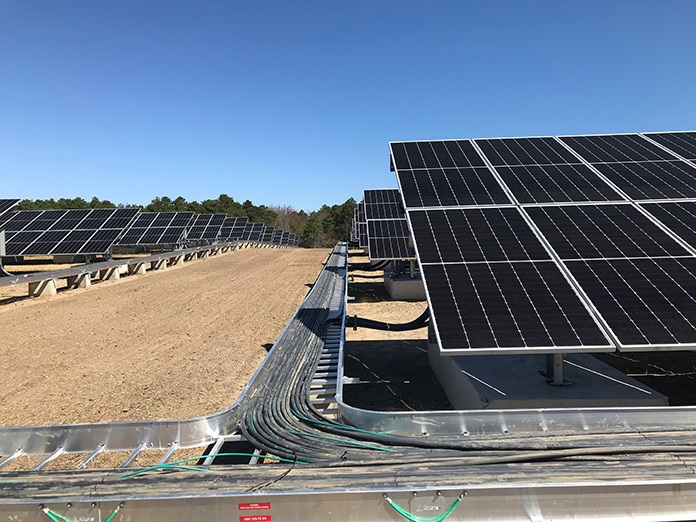
BERKELEY – A company capping an old landfill and installing a solar field over it is the future, and officials said it’s a perfect way to bring green energy to the state and create jobs.
The solar fields, dubbed Eagle 1 and 2, were built over the municipal landfill behind the Public Works Department off Pinewald-Keswick Road. The town hasn’t used the landfill in decades. Although it was covered, it wasn’t capped. Capping a landfill keeps rain from running through it, taking harmful materials on its way to the groundwater.
Capping a landfill costs millions. That’s why a business did it for free in exchange for leasing the land to build the solar array. Then, going forward, residents would get reduced costs. Over the course of the last few years, township officials worked with CS Energy, state departments, and more to make this happen.

At the public unveiling of the solar fields, Mayor John Bacchione thanked Governor Phil Murphy for helping the town navigate the process with the Pinelands Commission and other bodies that had requirements. The event was a celebration of the hard work of a number of professionals who got this across the finish line.
Once online, the solar energy will power 1,600 homes in Berkeley and other areas in the grid. Murphy mentioned Toms River specifically. He said this is a major milestone toward his goal of 100% green energy in the state by 2035.
The governor thanked the Biden administration for providing $156 million in New Jersey solar projects that are helping conduct this process throughout the state.
Senator Carmen Amato was Berkeley’s mayor when this process first started. He thanked officials like Township Engineer James Oris and Business Administrator John Camera. He also thanked the governor’s office and the assemblymen for helping “on behalf of all the residents who will benefit from this.”
Eric Millard, chief commercial officer for CS Energy, said residents will see $7 million in savings over the life of the project.

He also mentioned that he believed this was the first such success in the state – and perhaps even the country. When Murphy heard this, he said that he wanted to sit down with Christine Guhl-Sadovy, the president of the Board of Public Utilities (who was in attendance) and Shawn M. LaTourette, the commissioner of Environmental Protection in the weeks to come to see if they could re-create Berkeley’s success in other towns.
They would need to get a list of uncapped municipal landfills and see where this could be feasible, he later said to reporters.
“We figured out the playbook,” Millard said. They could do it again elsewhere. He and the governor both acknowledged that there are a lot of uncapped landfills in the state.
Robert Shimko, business manager of IBEW (International Brotherhood of Electrical Workers) 400, said “We appreciate every opportunity the State of New Jersey has given organized labor.”
Anjuli Ramos-Busot, the director of the state chapter of the Sierra Club, said that having a solar field over an unbuildable spot like a landfill is a perfect location. “We shouldn’t be using open space or cutting down trees,” she said. “This site is an inspiration.”

What’s Next?
Bacchione told The Berkeley Times that the solar panels have been tested and are working, but they are not yet feeding the grid.
Before it gets to the public, he expects the energy company to inform residents of how to join the agreement for the reduced cost electricity.
“That landfill should’ve been cleaned up 50 years ago,” he said. The fact that they took a blighted area and made it clean in a way that is also providing jobs and a savings in energy costs for residents is a win all around.

It will save money in other ways, too, because the town didn’t have to pay to cap the landfill.
Berkeley Township will not be responsible for any maintenance of the solar panels, Bacchione confirmed.







